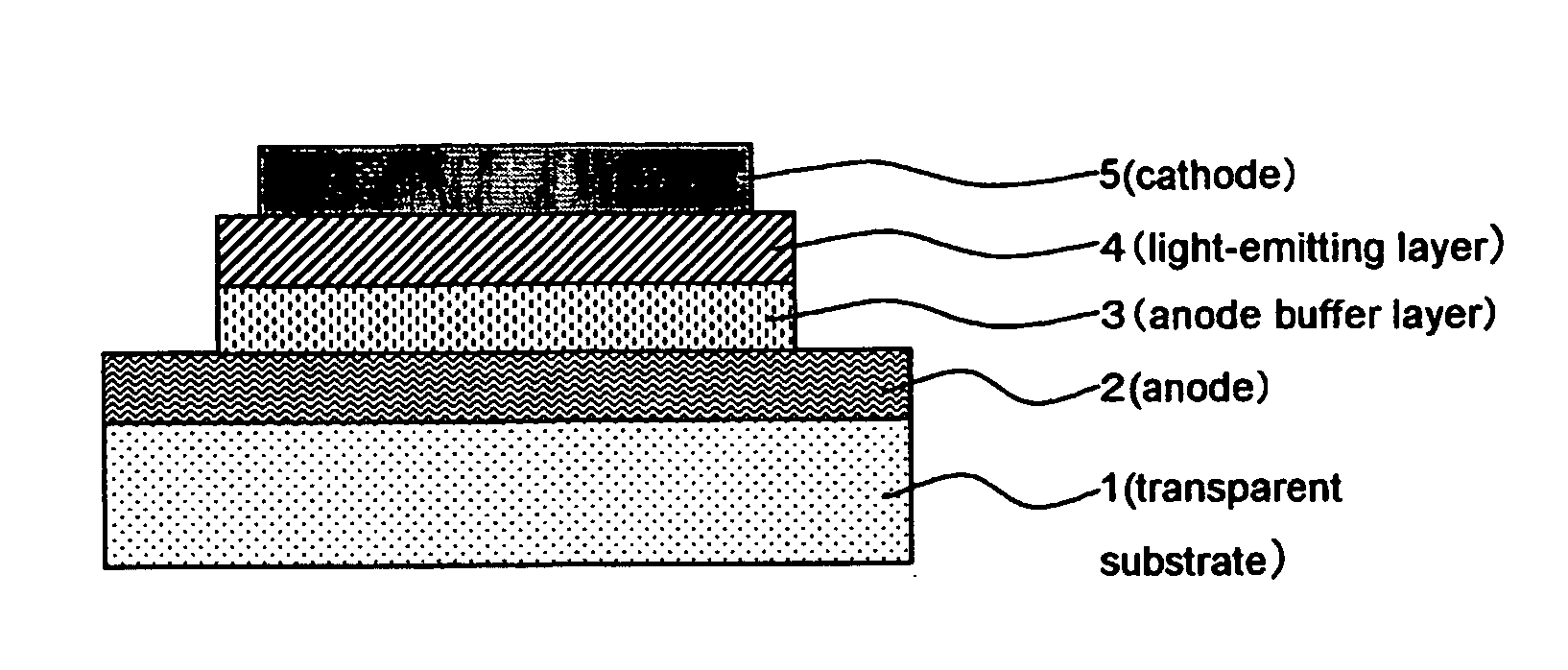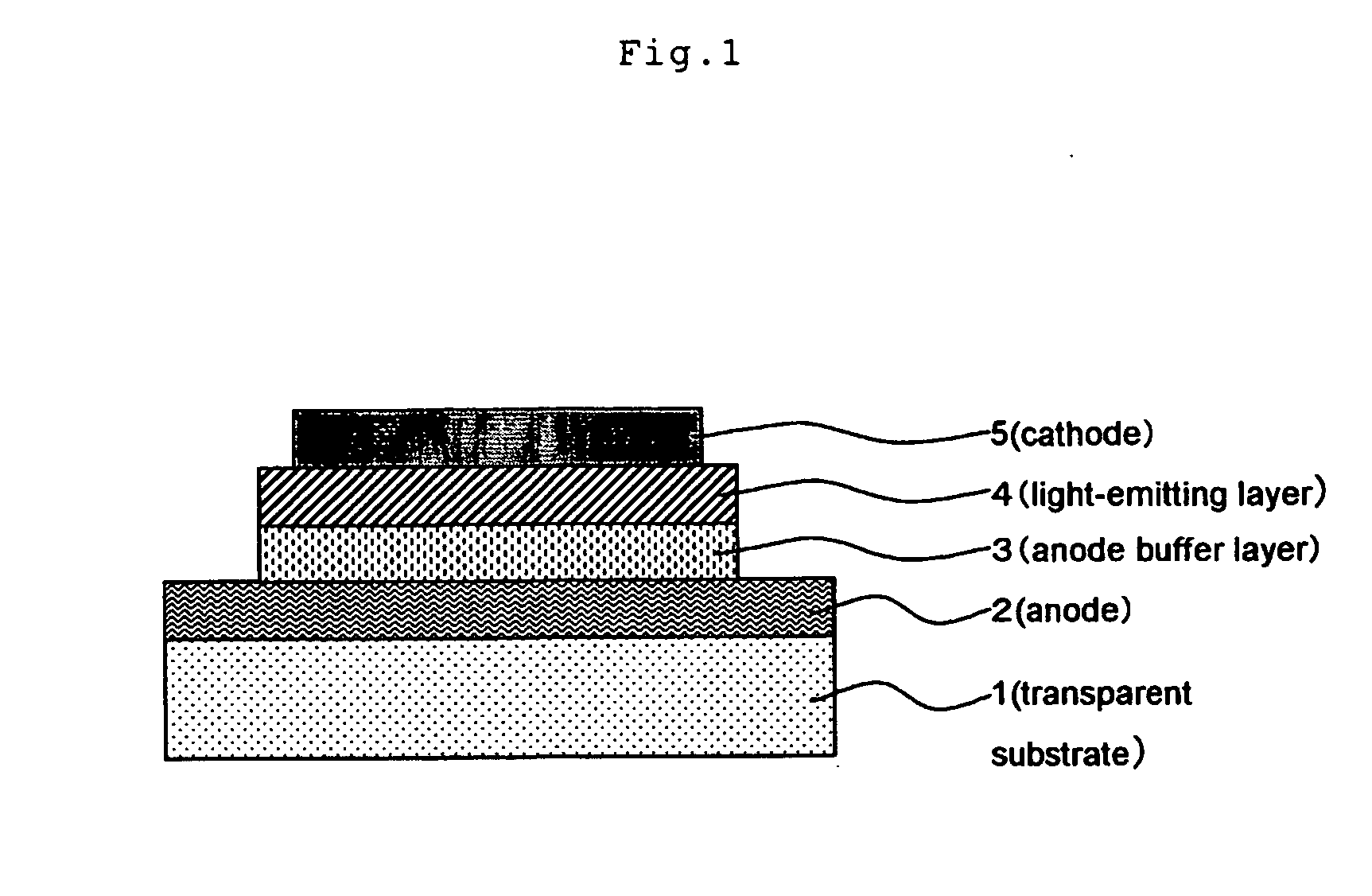Electroconductive Composition and Application Thereof
a technology of electroconductivity and composition, applied in the direction of electrically conductive paints, non-metal conductors, conductors, etc., can solve the problems of high electrical insulation, deterioration of functions, and inability to form thin films from such materials, and achieve excellent electroconductivity and low resistance
- Summary
- Abstract
- Description
- Claims
- Application Information
AI Technical Summary
Benefits of technology
Problems solved by technology
Method used
Image
Examples
example 1
Preparation of Electroconductive Coating Material
[0195] An electroconductive coating material was prepared by adding 0.7 mass parts of poly(5-sulfoisothianaphthene-1,3-diyl) (hereinafter simply referred to as “PolySITN”) and 1 mass part of hydroxypropyl cellulose (hereinafter simply referred to as “HPC”) (CAS#9004-64-2, manufactured by Acros Organics Co.) to 100 mass parts of water.
[0196] After rotationally coating 5 ml of the electroconductive coating material of the present invention on a glass substrate, it was dried by heating at 150° C. for 10 minutes to form an electroconductive coating film on a surface of a glass plate of 60×60×1.1 mm (#1737: manufacture by Corning Inc.). After the coating film was cooled for 30 minutes, the surface resistance Rs and the film thickness were measured. Then the electroconductivity was calculated.
examples 2 to 8
Preparation of Electroconductive Coating Material
[0197] Using electroconductive coating material prepared by using polySITN with hydroxypropyl cellulose (HPC) (in Examples 2-5), polycarboxylic acid-type polymer surfactant (POIZE) (in Example 6), polyvinyl acetamide (PNVA) (in Example 7) or polyethylene oxide (PEO) (in Example 8) as additives at the respective ratios shown in Table 1, electroconductive coating films using the electroconductive coating materials were formed in the same manner as in Example 1 and the electroconductivity values of the electroconductive films are shown in Table 1.
synthesis example 1
Synthesis of Phosphorescent Light Emitting Monomer: [6-(4-vinylphenyl)-2,4-hexane dionate]bis(2-phenylpyridine)iridium (III) (Hereinafter Referred to as IrPA)
[0200] Synthesis was conducted in accordance with the method as described in JP-A-2003-113246, to obtain IrPA.
PUM
| Property | Measurement | Unit |
|---|---|---|
| thickness | aaaaa | aaaaa |
| thickness | aaaaa | aaaaa |
| thickness | aaaaa | aaaaa |
Abstract
Description
Claims
Application Information
 Login to View More
Login to View More - R&D
- Intellectual Property
- Life Sciences
- Materials
- Tech Scout
- Unparalleled Data Quality
- Higher Quality Content
- 60% Fewer Hallucinations
Browse by: Latest US Patents, China's latest patents, Technical Efficacy Thesaurus, Application Domain, Technology Topic, Popular Technical Reports.
© 2025 PatSnap. All rights reserved.Legal|Privacy policy|Modern Slavery Act Transparency Statement|Sitemap|About US| Contact US: help@patsnap.com



